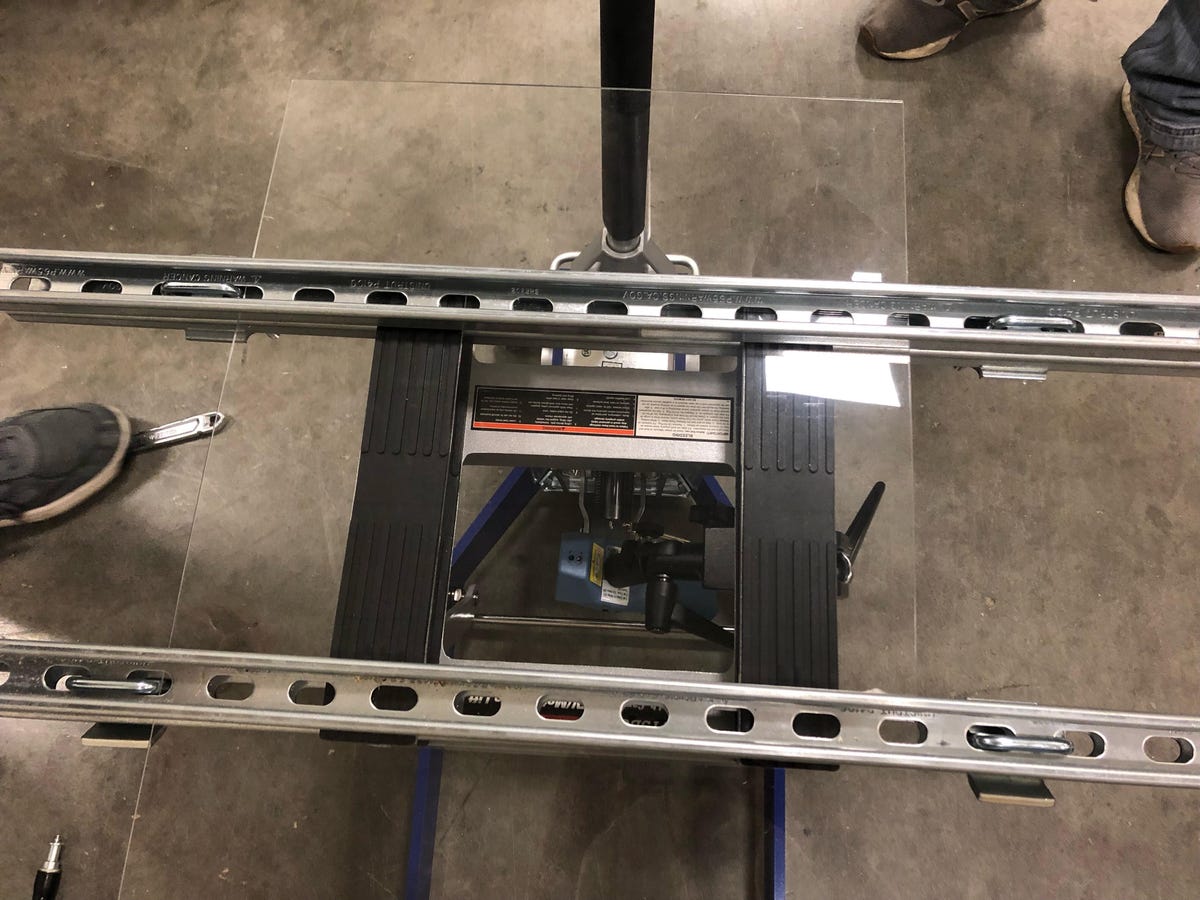
We test electric lawnmowers by running each through a battery of tests (no pun intended, since we do run actual battery tests) and yes, we also mow stuff. There are certain product categories where we collect, at the time, tons of data, but despite our best efforts, data alone cannot give us the entire picture about which product performs the best. Taking these to the yard is the best way to help filter through and decipher the data we have.
Battery tests
Let’s begin with those battery tests. This one isn’t too complicated, but it can get a bit tricky to physically set up. To measure the voltage and amps the mower pulls during operation, we have to insert our measurement devices between the battery and mower. The physical process varies a bit from mower to mower, but once set up, we get a measure of the DC voltage and amps moving between the battery and mower, which gives us an idea of the mower’s motor power (in watts).
We take these measurements at zero load, meaning we aren’t cutting grass at the time or otherwise providing any resistance against the blades, which would change the numbers, making them higher to calculate the higher limits of the motor’s power. Our next round of testing updates will include those upper power limits as well.
RPM tests
Yes, we absolutely measure blade RPMs in electric mowers. The eagle-eyed lab staff at CNET has developed the ability to count dozens of revolutions per second in a super accurate fashion. I’m kidding, although we do have a meter for that. In reality, we take a bit of reflective tape and position that onto the mower blade, then aim the measurement tool so that the laser light overlaps that tape and we get a precise reading on blade RPM.

You can see our test meter in blue in the center beneath the safety glass.
Now, if we combine those numbers with others such as blade lengths and weights and throw in some of our motor power calculations, we can estimate things like the amount of force, in Newtons, the blade is exerting on grass. Those numbers aren’t exceedingly helpful. Most people won’t have much of an idea what 5 Newtons of force is comparable to. We prefer to take the route of comparing the power outputs to something people are more familiar with; in this case, horsepower.
Gas-powered push mowers vary in horsepower, but the majority of them land in the 3 to 5-hp range. We will have upper limit numbers added for our next update, but you can see that the lower limit in horsepower for the electric mowers we tested ranged from about 0.1 to 0.6hp. That is, not much. Generally, you should expect to see electric mowers triple that number toward their upper limits, so we’re looking in the 1.75hp ballpark. You’ll be hard-pressed to find retail gas-powered push mowers operating below 2hp.
Noise level
We talk about sound level often, especially with outdoor-type tools. Historically these outdoor gas-powered tools have been quite loud. (Try to sleep in when all your neighbors are mowing early on the weekends.) With the advent of electric power tool platforms, that’s all changing. Your neighbor can obsess over lawn care while you snooze the day away.
We tested the decibel level for the mowers from the point of view of a person operating it. We stationary-mount a decibel meter and take the measurement. The results weren’t too surprising, with our quietest mower being the smallest, the 13-inch Litheli at 68.6dB, and the loudest was also the most powerful mower, the Ego, at 86.7dB.
Speed tests
You might normally think of mowers moving at a certain rate, specifically, at whatever rate you happen to be pushing it. An increasing number of mowers are now coming with self-propelled options. Many of these electric-powered mowers allow you to use that function even when the blades aren’t running.
We measure how fast mowers move in miles per hour. You won’t be visiting any on-ramps with these, but if you plan to use this mode, this may help you decide which one to pick up or pass on. The Ryobi had the widest range of speeds to choose from but fell slightly short of being the fastest mower. Ryobi topped out at 3.03mph and the Greenworks Pro at 3.33mph.
Some mowers, like this Kobalt model, can get bogged down by grass clippings.